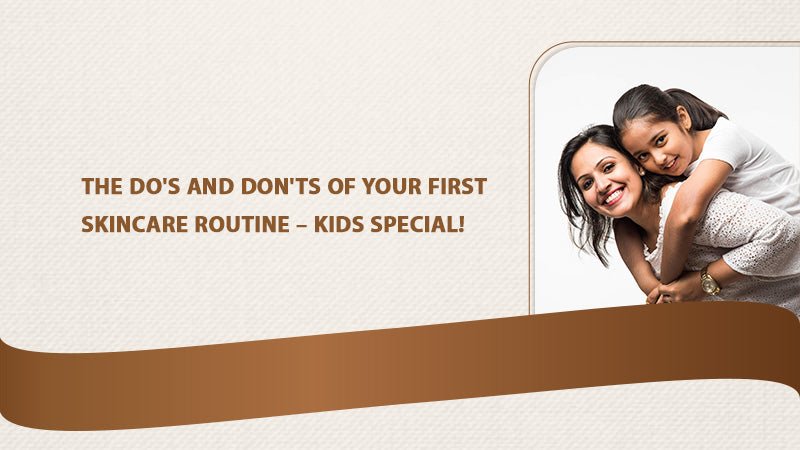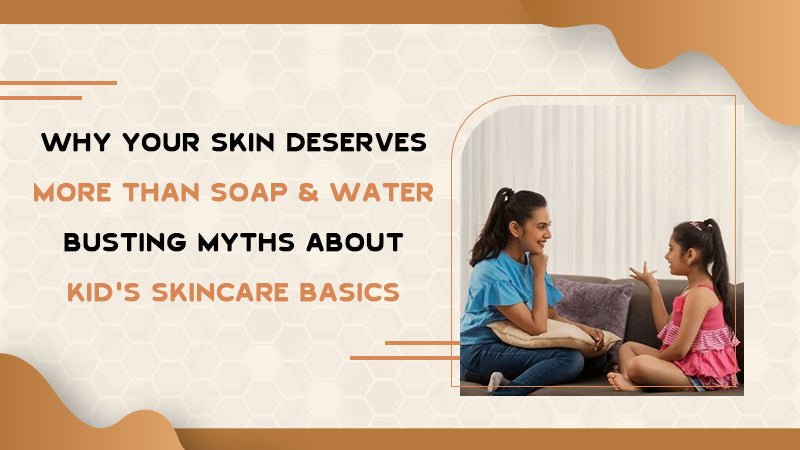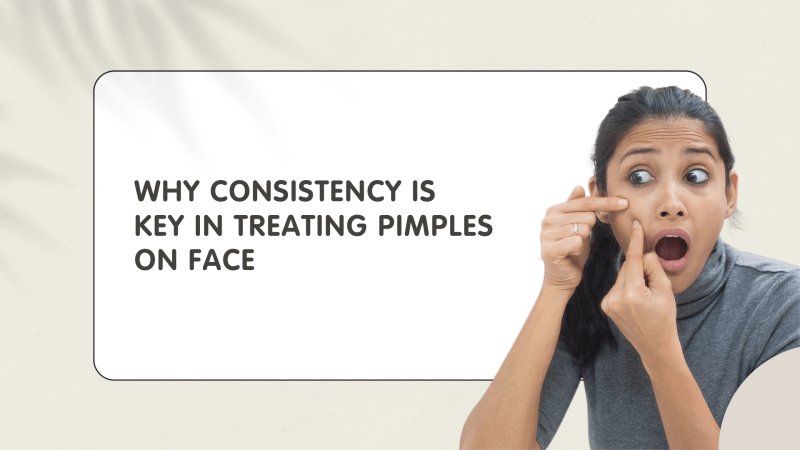4 types of pimples and How to Treat Them
There’s no doubt that the teenage years are the most important phase of life. The burst of energy, excitement, and never-ending thirst for adventure in almost everything we do is simply endless. However, some elements of this phase make it a little unpleasant to bear. And pimples top that list.
Pimples, or acne in medical terms, are common skin conditions that occur when hair follicles and pores become clogged with oil, dead skin cells, and bacteria. Dealing with pimples can be frustrating, especially when they seem to appear out of nowhere and take forever to go away. But did you know that if you understood the different types of pimples and how to treat them, you could make a significant difference in managing them and achieving clearer skin?

Given below are the four main types of pimples and the best ways to treat each one:
Whiteheads
Whiteheads, or closed comedones, occur when a pore on the skin’s surface is clogged with sebum (oil produced by the skin), dead skin cells, and bacteria. The pore remains closed at the surface, giving it a pale appearance. Whiteheads can be small and skin-coloured or white and often mistaken for other skin conditions like milia.
Whiteheads can be aggravated by:
- Hormonal Changes: Fluctuations in hormones, particularly during puberty, menstruation, pregnancy, and certain medications.
- Skincare Products: Using products that are too heavy or greasy can contribute to clogged pores.
- Diet: High consumption of dairy products and high-glycemic foods can sometimes trigger them.

Treatment:
- Gentle Cleansing: Use a mild, non-comedogenic cleanser to wash your face twice daily. Overwashing can strip the skin of natural oils, leading to increased oil production.
- Salicylic Acid: This helps exfoliate the skin and keep pores clear. It penetrates the pore lining and helps break down the buildup of dead skin cells.
- Benzoyl Peroxide: It can kill bacteria and reduce inflammation. It's available in various strengths and can be found in many over-the-counter acne treatments.
- Retinoids: These help to prevent clogged pores and promote cell turnover. They can be found in both prescription and over-the-counter products.
- Non-comedogenic Moisturizers: Keep the skin hydrated without clogging pores. Look for products labelled "non-comedogenic," meaning they are less likely to cause pore blockages.
Additional Tips:
- Exfoliation: Regular exfoliation can help prevent the build-up of dead skin cells. However, avoid over-exfoliating, as it can irritate the skin and worsen acne. Keeping your skin type in mind, you can try chemical exfoliants such as AHAs or BHAs.
- Avoid heavy makeup: Choose lightweight, non-comedogenic makeup products to reduce the risk of clogging pores.
Blackheads
Blackheads, or open comedones, are similar to whiteheads, but the difference is that the pore is open at the surface, allowing the contents to oxidize and turn black. Blackheads are often found on the nose, chin, and forehead.
Blackheads form when a clog or plug develops in the opening of hair follicles in your skin. Each follicle contains one hair and a sebaceous gland that produces sebum, which helps keep your skin soft. Dead skin cells and oils collect in the follicle opening, which causes a bump called a comedo. If the skin over the bump stays closed, it remains white. If the skin opens, exposure to the air causes it to look black.
Treatment:
- Salicylic Acid: Helps dissolve the keratin plugs blocking the pores. It's effective in breaking down blackheads and preventing new ones from forming.
- Retinoids: Promote cell turnover and prevent the formation of new comedones. They also help to improve skin texture and tone.
- Clay Masks: Can help absorb excess oil and reduce the appearance of blackheads. Clay masks draw out impurities from the skin and can be used once or twice a week.
- Professional Extractions: A dermatologist or licensed esthetician can safely remove blackheads. It's important to have extractions done by a professional to avoid skin damage and scarring.
Additional Tips:
- Avoid Pore Strips: While pore strips can remove blackheads temporarily, they can also irritate the skin and do not prevent blackheads from forming.
- Use Oil-Free Products: Choosing oil-free skincare and makeup products can help reduce the formation of blackheads.
Papules
Papules are inflamed, red bumps that develop when oil or dead skin cells block a pore and cause irritation, but without pus. They are usually tender to the touch and can be a precursor to pustules.
Papules form when the walls surrounding your pores break down from severe inflammation. This results in hard, clogged pores that are tender to the touch. Several factors contribute to the formation of papules:
- Bacterial Infections: Propionibacterium acnes (P. acnes) bacteria can contribute to the formation of papules by causing inflammation.
- Hormonal Fluctuations: Hormonal changes, particularly during puberty and menstruation, can increase oil production and lead to acne.
- Stress: High-stress levels can exacerbate acne by increasing oil production and inflammation.
Treatment:
- Benzoyl Peroxide: Reduces bacteria and inflammation. It is available in various strengths and formulations, including gels and creams.
- Topical Antibiotics: Help reduce bacterial growth and inflammation. They are often prescribed in combination with other acne treatments.
- Avoid Picking: Picking at papules can lead to scarring and further inflammation. It's important to resist the urge to pick or squeeze pimples.
- Ice Packs: Can reduce swelling and discomfort. Applying an ice pack wrapped in a clean cloth can help soothe inflamed papules.
- Over-the-Counter Creams: Look for products containing ingredients like tea tree oil or niacinamide, which can soothe inflammation. These ingredients have anti-inflammatory properties and can help reduce redness.
Additional Tips:
- Spot Treatments: Using spot treatments with anti-inflammatory ingredients can help reduce the size and redness of papules.
- Avoid Harsh Scrubs: Harsh exfoliants can irritate the skin and worsen inflammation. Opt for gentle exfoliation methods instead.
Pustules
Pustules are similar to papules but contain pus, appearing as red bumps with a white or yellow spot in the middle and are often caused by infections in the pores.
Pustules form when the walls around your pores break down, often because of infection or inflammation. Pus forms as a result of the body's immune response to the infection.
Factors that can contribute to the formation of pustules include:
- Bacterial Infections: P. acnes bacteria can cause pustules by infecting clogged pores.
- Hormonal Changes: Hormonal fluctuations can increase oil production, leading to clogged pores and pustules.
- Irritation: Using harsh skincare products or aggressive exfoliation can irritate the skin and lead to pustule formation.
Treatment:
- Benzoyl Peroxide: Kills bacteria and reduces inflammation. It's effective in treating pustules and preventing new ones from forming.
- Topical Antibiotics: To reduce bacterial growth. These are often prescribed in combination with other acne treatments.
- Salicylic Acid: Can help to unclog pores. It is effective in treating both pustules and preventing new ones from forming.
- Avoid Squeezing: Popping pustules can lead to scarring and spread bacteria, causing more pimples. It's important to resist the urge to pick or squeeze them.
- Spot Treatments: Use spot treatments containing sulfur or salicylic acid to dry out pustules and speed up healing. These treatments can help reduce the size and redness of pustules.
Additional Tips:
- Gentle Cleansing: Cleanse your skin gently with a non-comedogenic cleanser to avoid further irritation.
- Avoid Heavy Makeup: Using heavy or oil-based makeup can clog pores and worsen pustules. Opt for lightweight, non-comedogenic makeup products instead.
General Tips for Preventing Pimples
Try these tips below to get a better hand at managing pimples.
- Consult a dermatologist to find the best skincare regimen for your skin. Consistency is key to managing acne and achieving clearer skin. Based on their suggestions, your routine would include cleansing, moisturizing, and applying appropriate treatments.
- Washing your face too frequently can strip it of natural oils, causing more oil production and potential breakouts. Stick to washing your face twice daily and after sweating.
- Drink a reasonable quantity of water throughout the day to keep your skin hydrated from the inside out. Hydration is essential for maintaining healthy skin and preventing dryness and irritation.
- Avoid excessive consumption of sugary products, which are known to cause acne in some people. A balanced diet rich in fruits, vegetables, and whole grains can promote healthy skin.
- Use skincare and makeup products that won’t clog pores. Look for products labelled as "non-comedogenic," meaning they are less likely to cause pore blockages.
- Exfoliating regularly helps remove dead skin cells and prevent clogged pores. However, avoid over-exfoliating, which can irritate the skin and worsen acne.
- Touching your face can transfer bacteria and oils from your hands to your skin, leading to breakouts. For this, try to keep your hands away from your face as much as possible.
- Regularly washing your pillowcases and towels can help reduce the transfer of bacteria and oils to your skin. Aim to change your pillowcases at least once a week.
- Protect your skin from the sun by using a broad-spectrum sunscreen with an SPF of 30 or higher. Sun exposure can worsen acne and cause dark spots.
Understanding the type of pimples you have is the first step in treating them effectively. Using the right products and maintaining a consistent skincare routine, you can manage acne and achieve clearer, healthier skin. It's important to be patient, as acne treatments can take time to show results. If over-the-counter treatments aren't effective, consult a dermatologist for personalized advice and prescription options. Achieving clear skin is a journey, but with the right knowledge and tools, you can take control of your acne and feel confident in your skin.




